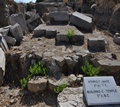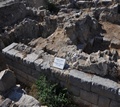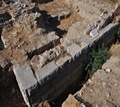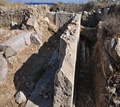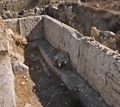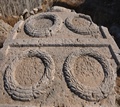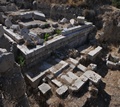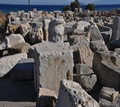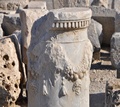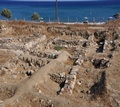
It is an extremely important archaeological site, which is located in Kardamena, which is identified with the ancient city of Alasarna of Kos. The habitation in the area begins in the Neolithic times, as was shown by the archaeological findings, and continues uninterrupted until the first centuries after Christ (during the early Christian period up to the 5th century AD). Excavations and surface research have brought to light monumental buildings, numerous inscriptions, pottery and other finds.
The findings of the archaic and classical period demonstrate that in the area of today's Kardamena there was not only habitation but also lively, extensive, commercial activity, since products from Athens and Corinth, far away at that time, reached ancient Alasarna. The sanctuary of Apollo and Herakles of the ancient municipality of Alasarnites also dates from this period. The sanctuary is located under Tholos hill, the Acropolis of ancient Alasarna, and very close to the Hellenistic or Roman theater and the basilica of the Holy Divinity of the 5th century. A.D. The prosperity continued during the Hellenistic and Roman times, while even in the early Christian period Alasarna continues to flourish.
The most important finds are: a) building C, a Doric style temple, simple in appearance, from the beginning of the 3rd century BC. b) the monumental building A, temple or other public building from the end of the 2nd and the beginning of the 1st century BC. c) Doric sparse style, perhaps wooden, portico on the north side of building A, probably from the 1st c. BC d) building B to the east of building A and contemporary with it, perhaps an altar, or part of A e) parts of three monumental buildings: D, E, Z, from the Hellenistic period, f) an extensive part of an important early Christian settlement with houses, laboratories spaces, squares and streets in two phases: I) around 400-554 AD. and II) 554-7th century. A.D. g) burial building of the 6th-7th century AD. From inscriptions and excavation evidence, it appears that ancient Alasarna at least during the 2nd century BC.
Undeniable witnesses of the timeless importance of this particular municipality are the important sanctuary of Apollo Pytheos or Pythaeus, the extensive early Christian settlement (one of the few known in the Greek area), as well as the four early Christian basilicas that have come to light so far.
Editor: Fotini Anastasopoulou










